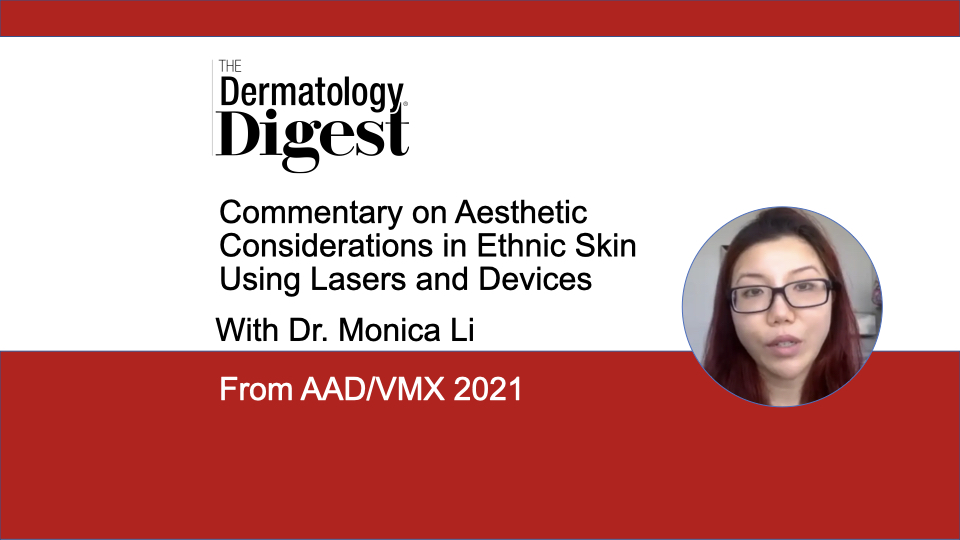Dr. Monica Li discusses strategies for minimizing risk when using energy devices on skin of color patients.
Monica Li, MD, FRCPC, FAAD, is Clinical Instructor in the Department of Dermatology & Skin Science at the University of British Columbia, Vancouver.
“Now there are a growing number of modalities that we can [use to] treat our skin of color patients. But what is really important, and what was echoed by our entire group of internationally acclaimed and very experienced dermatologists in the session, is treat skin of color—darker skin tones—with care, and treat it gently,” says Monica Li, MD, FRCPC, FAAD, session co-chair of “Let there be Light: Aesthetic Considerations in Ethnic Skin Using Lasers and Devices” at the AAD/VMX 2021 meeting.
Dr. Li was joined by Co-Chair Dr. Tina Alster, Washington Institute of Dermatologic Laser Surgery. The session talks were given by Dr. Rungsima Wanitphakdeedecha, Thailand; Dr. Jaishree Sharad, India; and Dr. Jeanine Downie, Montclair, NJ.
A primary driver behind the session, according to Dr. Li, was to recognize the changing North American demographics.
“As a result, there’s going to be different demands, expectations, and considerations that are important to take into account as we treat our patients who present to our practices with aesthetic concerns,” says Dr. Li, Clinical Instructor, Department of Dermatology & Skin Science, University of British Columbia, Vancouver.
Because skin of color patients have a higher risk for post inflammatory hyperpigmentation (PIH) and keloid scarring, when using lasers, Dr. Li and the panel recommend considering performing a representative pretreatment test spot and using lower energy fluences and fewer treatment passes.
“Fractional lasers and picosecond lasers both have been proven to be safe and effective in treating skin of color patients, but… because there’s still a bit of heat energy that can be delivered, we have to be cautious with our treatment parameters to avoid potential side effects such as postinflammatory hyperpigmentation,” says Dr. Li.
Notably, picosecond lasers deliver primarily a photoacoustic effect vs. a photothermal one seen with traditional laser systems. Shorter pulse durations and a primary photoacoustic effect help skin from overheating and can reduce the risk of PIH and scarring.
A good rule of thumb in the summer months, says Dr. Li, is to have skin of color patients follow a minimum of 30 days of strict photo protection or wait to perform laser and light treatments in the fall months.
“We have to be very cautious and have a low threshold for activated melanocytes in our patients; a patient may not come in necessarily with a visible tan. But, particularly during the summer months, there may be melanocytes that are activated because of trauma, injury, or other skin processes… it’s always better to wait it out and have a patient come back, typically around a month after we have seen them when they understand the importance of strict photo protection before performing the laser, light-based or energy based device that we are offering to our patients.”
Other treatments discussed include microneedling and energy-based devices for fat reduction. While microneedling is safe and effective across the skin spectrum, including those with dark skin tones, and can be used to help manage scars and striae, post-treatment topical agents applied immediately afterwards may increase the risk of granulomas. Energy-based treatments for fat reduction are generally considered safe for all skin types.


